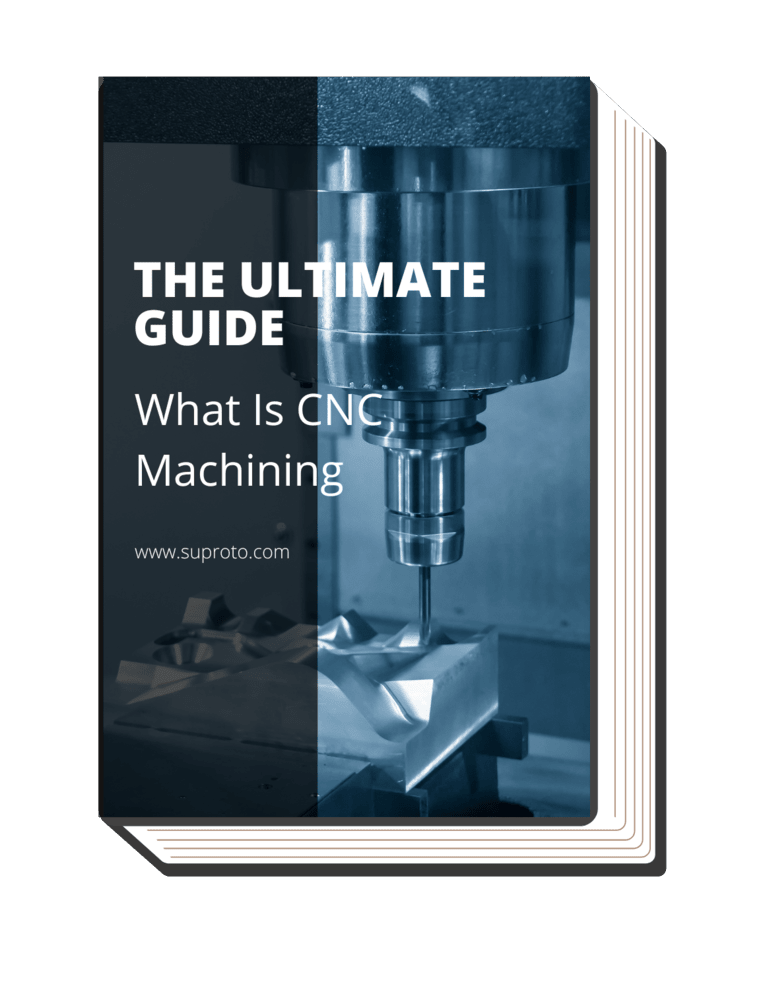Imagine sleek cylindrical parts like shafts or pins in their ideal and perfect shape. What makes them so perfect, especially when produced in large quantities? Well, it’s no easy feat to get such precision and maintain a fast pace.
Here’s where Centerless Grinding comes to the rescue! It’s champion in the manufacturing scene for its precision, speed, and efficiency. This method smoothly strips off material from objects through grinding without the fuss of clamping them down. The post ahead unfolds the principles, varieties, and uses of this smart grinding method.
Dive in to discover more!
1. An Overview of Centerless Grinding
Hey folks! Welcome to the magnificent world of centerless grinding. According to Science Direct, centerless grinding is a fast and efficient process for precision batch and mass production grinding. Wide wheels allow substantial removal rates. It is a method where to chuck out the old ways of grinding with one wheel chasing the other and bringing in double trouble—two wheels working together.
One is the big gun, the grinding wheel, which grinds faster. The other one, the regulating wheel, keeps things in check and makes sure the workpiece doesn’t go rogue. They rotate at different speeds and the relative speed determines how quickly material gets removed. Talking speed and efficiency, my friends! This technique is like fast food grinding, particularly handy when having a ton of parts to process in a flash.
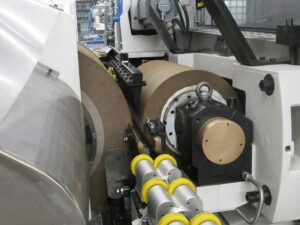
2. The History and Evolution of Centerless Grinding
Over the years, centerless grinding has evolved with advancements in grinding theory, machine design, and process monitoring, becoming a standard method applied in various industries. Now, let’s dive into its captivating journey and explore its origins.
Early Beginnings
Traveling back to 1917, the centerless grinding machine was born out of a dire need in the automotive industry. I imagine people in cool old-timey hats, working tirelessly to meet the demand for precision parts with high production volumes. The centerless grinding method was a revelation – size accuracy and roundness were improved by one-fourth, and production time was cut by one-tenth.
Middle Ages
Let’s call the mid-20th to the early 21st century the “middle ages”. During this period, the centerless grinding process was dressing up, heading to galas, and becoming the talk of the industry, especially in automotive and bearings. But just like every star, it had its quirks. The process was sensitive to setup conditions, and issues like out-of-roundness and chatter vibration could crop up.
Present
Fast forward to the now, the centerless grinding process has evolved into a well-refined art. Its preciseness and efficiency are simply mind-blowing! The relentless work of the centerless grinding researchers has led to a better understanding of the various mechanisms at play. The most amazing part? Progress in technology enables the production of parts with absurdly precise roundness accuracy. Talk about perfection!
3. Advantages of Centerless Grinding
Centerless grinding is renowned for its so many advantages. Here, let’s delve into some of the intricate benefits of centerless grinding. See the ff below:
High Precision
The high precision achievable through centerless grinding is truly remarkable. The process provides smoother finishes and tighter tolerances, ensuring the end product is of supreme quality. When talking about high precision, it’s not only about the smooth surface but also the accurate shaping they can attain. The intriguing thing about centerless grinding is that it’s a highly skilled operation that combines both art and science.
Efficient Manufacturing
Efficiency is one of the defining characteristics of centerless grinding. Not only does the process allow for exceptionally short loading times, but once the centerless grinding equipment is set up, the operator can usually complete the full production run without needing to reset it, making the manufacturing process faster and more economical. I can tell it is particularly beneficial for high-volume production.
Versatility
Yet another feather in the cap for centerless grinding is versatility. The process is adept at shaping a myriad of materials and is perfect for working on complex parts. Because the workpiece is completely supported during grinding, it’s possible to use heavier passes than those used by centered grinding, which makes it great for grinding delicate pieces and brittle materials. We have seen it at Suproto’s centerless grinding.
4. The Types of Centerless Grinding
Centerless grinding is classified into three forms, differentiated mainly by the methods used to feed the workpiece into the machine. Now we will get to know the main types of centerless grinding. Below are some to explore:
Through-Feed Centerless Grinding
Like a wizard in the world of grinding technology is through-feed centerless grinding. In this process, the workpiece is fed completely through the grinding wheels, entering from one side and leaving from the other. Believe me, this method is magical for parts that have a uniform diameter. The abrasive grinding wheel and the regulating wheel perform the grinding, while the workpiece is supported by the remaining blade.
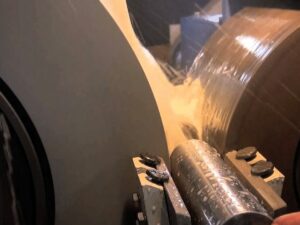
In-Feed Centerless Grinding
In-feed centerless grinding is tailored for items with complex shapes that couldn’t possibly be managed through the feed grinding process. Here, the workpiece can have an independent outer diameter over the entire length, and the improved grinding wheel can be used to grind each part of the workpiece or crush the entire workpiece. Suproto has proven this method is particularly effective for grinding workpieces.
End-Feed Centerless Grinding
In the end-feed grinding process, the workpiece is fed axially into the machine on one side and comes to rest against an end stop; the grinding operation is performed, and then the workpiece is fed in the opposite direction to exit the machine. From my point of view, end-feed centerless grinding is like the brilliant student in the class, for example, who can perform complex tasks with ease and grace.

5. Key Components of a Centerless Grinding Machine
Centerless grinding machines, unlike their traditional counterparts, do not use a spindle or fixture to secure the workpiece. Here we will be exploring the key components of these specialized machines.
The Grinding Wheel
I can see the grinding wheel as the lifeblood of any centerless grinding machine. The wheel creates an abrasive cutting action, carving its way through the workpiece with the grace of an ice skater gliding on a rink. It rotates at a high linear velocity at the contact point, which means it is able to remove material from the outer diameter of the workpiece with precision and finesse.
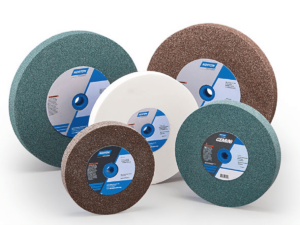
The Regulating Wheel
Next up, we have the regulating wheel, which is the unsung hero of the grinding process. This wheel controls the rotational speed and feed rate of the workpiece and is poised to apply lateral pressure to it. Its name might not evoke the same level of excitement as the Grinding Wheel, but make no mistake. The Regulating Wheel is absolutely pivotal in ensuring the process is smooth and the end result is polished.
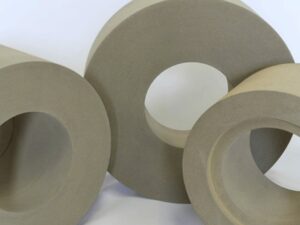
The Work Rest Blade
The work rest blade is the guardian angel of the centerless grinding process. Based on my experience, this is where the workpiece rests during grinding, an oasis from the friction between the two wheels. The Work Rest Blade ensures that the workpiece is positioned properly and is also supported throughout the grinding process.
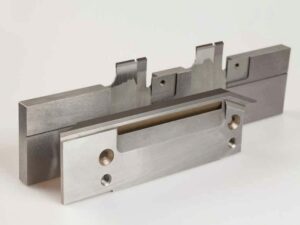
6. Centerless Grinding Process
Here let’s unravel the intricacies of the centerless grinding process and examine how the workpiece is secured between two rotary grinding wheels without the use of a spindle or fixture.
Step#1 The Setup
When it comes to setting up a centerless grinding machine, the accuracy and precision are akin to setting a priceless gem in a crown. I have seen the setup involves selecting the right grinding wheel and regulating wheel. The alignment of the wheels, the angle of the regulating wheel, and the height of the work rest blade are all set to perfection, so the machine is ready to perform its magic.
Step#2 The Procedure
With the setup complete, it’s time to bring in the star of the show – the workpiece. It is carefully loaded onto the Work Rest Blade and nestled between the Grinding and Regulating Wheels. This dynamic duo then springs into action, with the Regulating Wheel rotating the workpiece and the Grinding Wheel removing material from its outer diameter. I can tell, it’s like a well-choreographed dance where the partners move in perfect unison.
Step#3 Post-Grinding
After the grinding is completed, the workpiece takes a bow and exits the stage. The workpiece is then subjected to a thorough inspection to ensure that it meets the desired specifications, like what we always do at Suproto. Sometimes, a finishing touch is needed, which might involve polishing or adding any other kind of surface finish.
7. Applications of Centerless Grinding
Centerless grinding has carved a niche for itself in various industries due to its high precision and efficiency. Now, we will explore the multitude of applications of centerless grinding in different sectors. Refer to the data below:
Automotive Industry
In the fast-paced automotive industry, precision and efficiency are paramount. Recent advances in abrasive grinding materials and processes have made centerless grinding a sought-after alternative to traditional machining processes in automotive manufacturing. I keep a small collection of vintage car parts, and I can attest that the ones produced through centerless grinding have a certain extra flair.
Aerospace Industry
Soaring into the aerospace industry, centerless grinding is truly taking off. The aerospace industry is known for requiring components that are extremely precise and have complex geometries. With the rise of metal additive manufacturing in aerospace, there is a need for post-processing and precision finishing of components such as turbine parts, rocket engines, and satellite components.
Metalworking and Manufacturing
Here, centerless grinding is the trusted sidekick. From creating medical devices to cutting tools, for example, it’s employed in many applications. The manufacturing industry constantly demands innovation and efficiency. Trust me, through centerless grinding, manufacturers can achieve high levels of precision and surface finish, which are often essential in the production process.
8. 4 Factors to Consider When Choosing Centerless Grinding
When selecting centerless grinding for manufacturing processes, it is essential to consider several factors. Listed below are some that must be taken note of.
#1 Diameter Capacity
An essential aspect to mull over is the diameter capacity and material capabilities that centerless grinding offers. I see centerless grinding uses an abrasive wheel to grind metal from a bar’s surface, and a regulating wheel to force the bar against the grinding wheel.
#2 Grindability
The grindability of the work material is an important factor to consider; wear-resistant materials will take longer to process. From my point of view, it is crucial to determine how the metal-removal rate (MRR) will impact the part surface finish and overall part tolerances.
The following table provides an overview of grindability and its significance in machining processes, considering factors such as material removal rate, surface finish, part tolerances, and tool wear.
| Grindability |
Description |
| Definition |
Grindability refers to the ease with which a work material can be ground or machined. |
| Factors |
The grindability of a material is influenced by various factors, including its hardness, toughness, and microstructure. |
| Importance |
Grindability is important in determining the machining process and parameters, as it affects material removal rate (MRR). |
| Material Effect |
Wear-resistant materials tend to have lower grindability, requiring more time and effort for machining. |
| Surface Finish |
Grindability affects the surface finish of the machined part. Materials with higher grindability typically yield smoother finishes. |
| Part Tolerances |
The grindability of the work material can impact the overall part tolerances. Softer materials may be machined with tighter tolerances than harder ones. |
| Machining Time |
The grindability of a material affects the machining time. Less grindable materials may require longer processing times. |
| Tool Wear |
Grindability influences tool wear during machining. Harder materials may cause more significant tool wear and require frequent tool changes. |
| Workpiece Selection |
Grindability is a crucial consideration when selecting the appropriate material for a specific machining operation. |
| Testing Methods |
Several tests, such as the Bond Work Index (BWI) and the Hardgrove Grindability Index (HGI), are used to measure grindability. |
#3 Coolant
Coolant is a key component to successful centerless grinding. The basic functions of grinding fluids are to prevent distortion or metallurgical damage to the part by maintaining temperature, acting as a lubricator, washing away chips of metal and abrasive particles, and keeping the work blade and guides clean. It is essential to have a well-engineered coolant delivery system.
#4 Workpiece Support
Workpiece support is integral to the centerless grinding process. Parts are fed between a grinding wheel and a smaller regulating wheel while resting on an angled workpiece support. The way in which the workpiece is held between the wheels and support rail is crucial, especially for long, thin workpieces that may require precise shaping through CNC milling.
Conclusion
As we’ve navigated through the complexities of this process, we have seen how centerless grinding impacts and prove potential advancements to foresee in the light of business. Centerless Grinding is a pivotal manufacturing process that has grown significantly over the last few decades, proving indispensable in industries ranging from automobiles to the medical sector and aerospace.
By fostering this interaction, we aim to provide the most tailored and beneficial content. Looking for a business partner to do it? Please don’t hesitate to reach out for any clarification or in-depth discussion on centerless grinding. Together, let’s drive the future of manufacturing. Contact us now to learn more.






